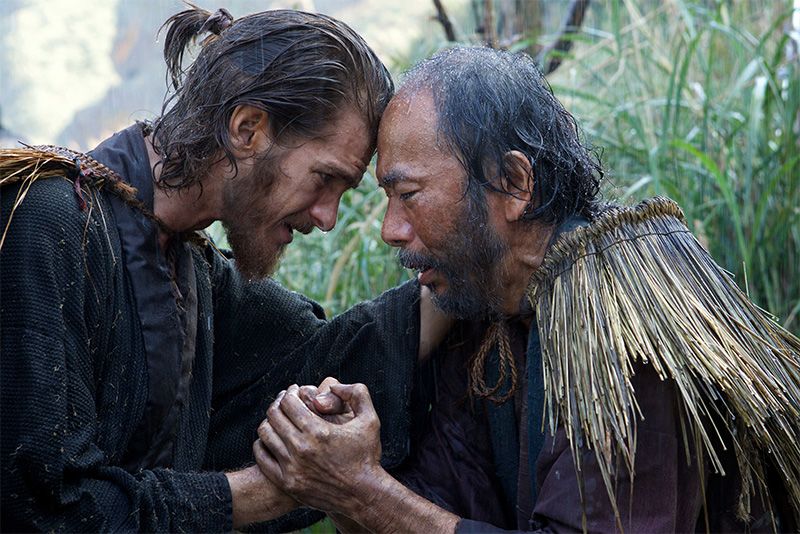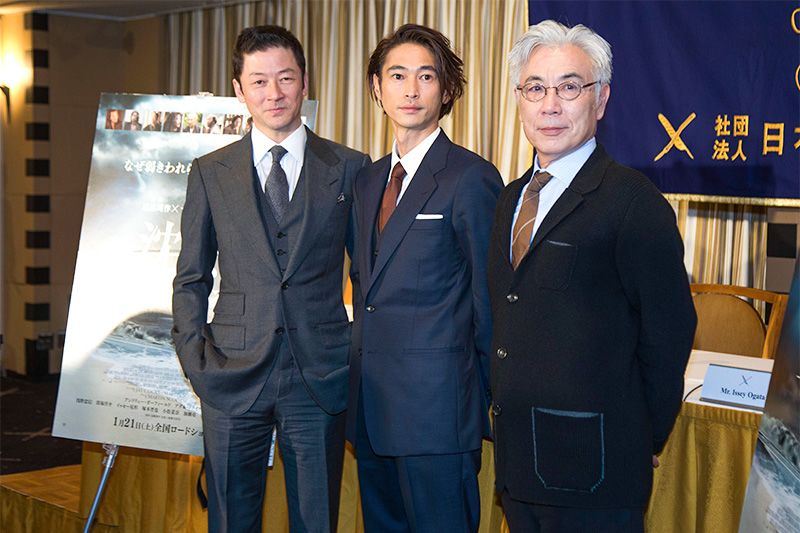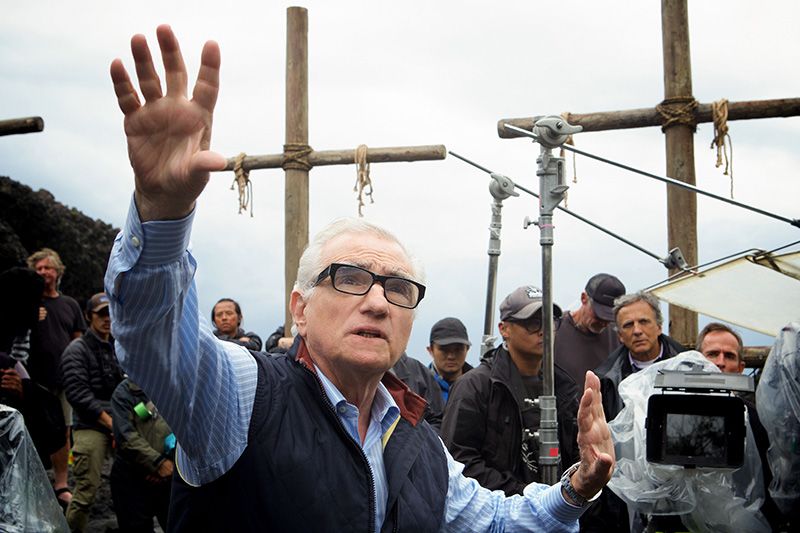Scorsese’s “Silence” Grapples With Questions of Faith in Seventeenth-Century Japan
Newsfrom Japan
Culture- English
- 日本語
- 简体字
- 繁體字
- Français
- Español
- العربية
- Русский
Martin Scorsese’s new film Silence tells the story of Portuguese Jesuit missionaries among local Christians forced to practice their religion in secret due to oppression in early seventeenth-century Japan. It is based on the 1966 novel by Endō Shūsaku (1923–96), which drew international acclaim in literary circles along with censure from the Catholic Church. Although Endō was himself a Catholic, the novel is often ambiguous, giving considerable space to criticisms of what is seen by the antagonists as an invasive faith.
Scorsese first learned of the book in 1988, as he faced heavy criticism for the depiction of a flawed and human Jesus in his film The Last Temptation of Christ. Deeply moved by Silence, he resolved to adapt it to film. It would be 28 years, however, before the work was finally complete.
 Portuguese priest Sebastião Rodrigues (left; Andrew Garfield) with the “hidden Christian” Mokichi (right; Tsukamoto Shin’ya). Rodrigues comes to Japan to seek his teacher, Father Ferreira, who is said to have apostatized. © 2016 FM Films, LLC. All Rights Reserved.
Portuguese priest Sebastião Rodrigues (left; Andrew Garfield) with the “hidden Christian” Mokichi (right; Tsukamoto Shin’ya). Rodrigues comes to Japan to seek his teacher, Father Ferreira, who is said to have apostatized. © 2016 FM Films, LLC. All Rights Reserved.
The True Nature of Faith
At a press conference shortly before the January 21 release of Silence in Japan, Scorsese talked about that fateful first encounter.
“[The Last Temptation of Christ] was received badly, but the night I showed it to an audience of religious groups, an Episcopal archbishop called Paul Moore spoke to us afterward. He liked it, or he liked the idea of a discussion. He said ‘I have a book for you called Silence. I’m going to give it to you because it’s about faith.’”
For Scorsese, who was raised in a family of devout Catholics and once considered becoming a priest, the true nature of faith has always been a major thematic concern. “After making Last Temptation and getting embroiled in controversy, I lost sight of where I wanted to go with my religion. When I read Silence, I felt that I could go further. I had to go deeper and find it in me the way Endō was able to find it.”
The path to completing the work was far from straightforward, though. “I felt I wanted to make the film, but I didn’t know how. I didn’t know if I understood how to interpret it. This had a lot to do with my own religious inclinations and questions and also the Japanese culture. . . . It was a long process of trial and error.”
“We Doubt Everything”
Scorsese secured the rights to the book soon after reading it. However, it took several years for him to start on the script, which was ultimately cowritten with Jay Cocks. “I think by the time I made Gangs of New York around 2003, it really began to change, and I began to think I could attempt a structured script of Silence.” He described how remarriage and his experience as an older father made this a turning point in his personal life as well.
The director applied many years of life experience to creating Silence. Even now that it is complete, he said that he is still living with the film. While working on it, he grappled with what to him are fundamental questions of faith and doubt, making it a particularly personal project.
For Scorsese, the novel by Endō was inclusive in that it was not about religious dogma, but the struggle of faith and doubt. “We doubt everything in our lives. We don’t even know why we’re here. That’s what attracted me and that’s what kept me going.”
In the world of Silence, Scorsese explained, the “hidden Christians” in Japan are attracted to the compassion and feminine side of Christianity, in which every human being has worth, rather than the authoritative side of the faith.
Japanese Actors Make a Strong Impression
One of the key characters in the story is Kichijirō, a Japanese peasant and Christian. Amid many depictions of firm faith, he stands out for his wavering. He repeatedly steps on the likeness of Jesus in fumie tests used by the authorities to weed out true believers, yet he continually returns to Christianity. From a modern perspective on the world of the hidden Christians, Kichijirō—seen as weak and unlikeable within the story—is often the easiest character to identify with.
The Japanese actors make a strong impression in the film. An earlier press conference at the Foreign Correspondents’ Club of Japan featured Kubozuka Yōsuke (Kichijirō), Issey Ogata (the inquisitor, Inoue Masashige), and Asano Tadanobu (the interpreter).
 From left to right, Asano Tadanobu, Kubozuka Yōsuke, and Issey Ogata, at the Foreign Correspondents’ Club of Japan press conference in Tokyo on January 12, 2017.
From left to right, Asano Tadanobu, Kubozuka Yōsuke, and Issey Ogata, at the Foreign Correspondents’ Club of Japan press conference in Tokyo on January 12, 2017.
Kubozuka spoke about his character Kichijirō. “In the original novel, he’s described as ‘weak,’ but he tramples the fumie so often, I don’t know whether he’s weak or strong. It’s like two sides of the same coin.” He said that the character “falls,” but that this is different from apostatizing. “He falls, gets up, and believes again. Endō apparently said of him, ‘This is me.’ Kichijirō is faithful to the feelings that arise in his heart and he believes in God even though he treads on the fumie. He is a selfish character and very human.”
Scorsese did not provide any explanation or direction on how to play Kichijirō, leaving that to Kubozuka. The same was true for the inquisitor Inoue, played by Issey Ogata. “First [Scorsese] would watch us perform. ‘That’s interesting, go on,’ he’d say. He never made any negative comments. This situation allowed us to refine our ideas and feelings as actors. I was able to sense Rodrigues’s mood.” Ogata explained how this allowed him to perform naturally in a late scene with the deflated Rodrigues (the priest played by Andrew Garfield), where he unconsciously approached the man to comfort him.
The inquisitor Inoue tortures and kills Japanese Christians and presses Rodrigues to give up his faith. Ogata’s monumental performance, alternately menacing and humorous, was honored with the runner-up award for Best Supporting Actor by the Los Angeles Film Critics Association.
Asano Tadanobu is known to international film fans for his roles in Koroshiya Ichi (Ichi the Killer) and Hollywood fare like Thor. He played the interpreter in Silence after originally auditioning for the part of Kichijirō. “Caught between Inoue and Rodrigues, [the interpreter] is not simply a bad guy. I thought he might have been a lapsed Christian who took on the job despite his former faith,” Asano said.
 Martin Scorsese directing Silence in Taiwan. © 2016 FM Films, LLC. All Rights Reserved.
Martin Scorsese directing Silence in Taiwan. © 2016 FM Films, LLC. All Rights Reserved.
Silence is set in coastal areas near the city of Nagasaki. The wild sea and natural scenery are impressive parts of the movie, but it was actually shot in Taiwan. Kubozuka said that many veterans of filming period dramas had worked on the project and Scorsese took their opinions into account, considering historical factors on each day’s shooting. “If anything was incorrect, he would immediately have it changed. For this reason, there was no sense of incongruity about filming in Taiwan.”
Unlike the novel in 1966, Scorsese’s Silence has been received favorably by the Catholic Church. The director was invited to an audience with Pope Francis, although he commented, “I’m not sure if he saw the film. He seemed to be very busy.”
It will be interesting to see how Japanese filmgoers respond to Scorsese’s passion project. Whether they are able to garner any further awards or not, though, its main Japanese actors should benefit from a raised profile.
(Banner photo: Martin Scorsese speaks at a Silence press conference in Tokyo on January 16, 2017, shortly before the film’s Japanese release.)
Nagasaki literature film Christianity Endo Shusaku Martin Scorsese